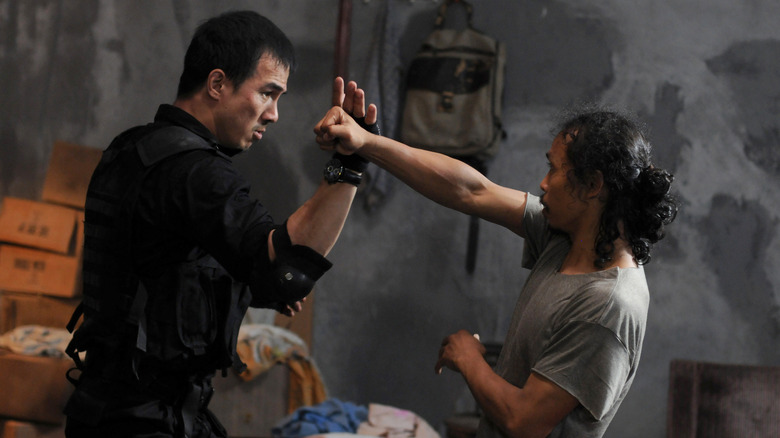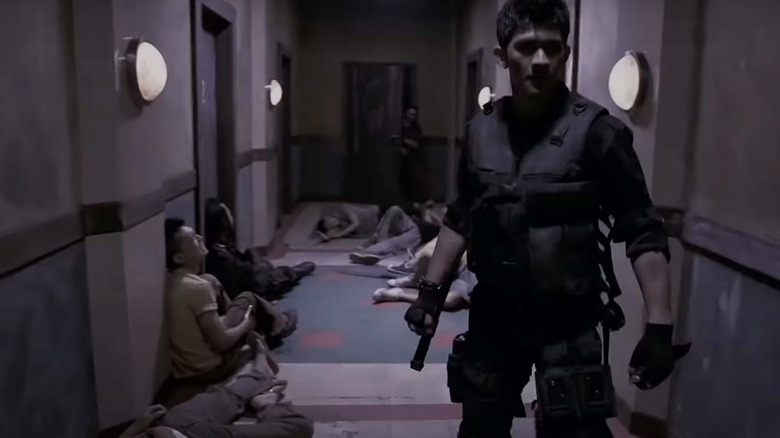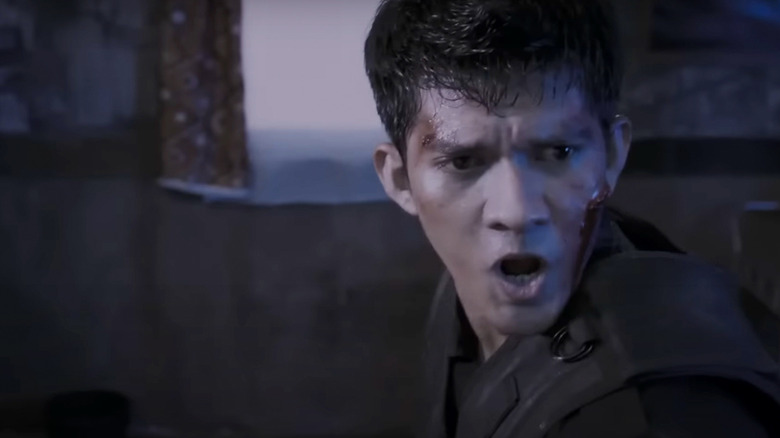
If you grew up in a small Welsh village and studied for a career in documentary filmmaking, what would be the logical next step? Make a string of high-intensity Indonesian action movies, of course. And that's exactly what director Gareth Evans did after becoming captivated by the martial art of Pencak silat. His breakthrough effort, "The Raid" or in the US "The Raid: Redemption" gained widespread recognition for its non-stop action and brutal fight scenes. The movie showcased Pencak silat, and relative newcomer Iko Uwais as rookie cop Rama, in a way that hadn't really been seen before — at least in the west. And the plot? As simple as 20 cops fighting their way through 30 floors of a tower block to bring down one drug dealer.
And it was a winning formula, with reviews for the movie proving as bombastic as the film itself. The Hollywood Reporter called it a "hard-driving, butt-kicking, pulse-pounding, bone-crunching, skull-smashing, blood-curdling martial arts siege movie," which somehow still doesn't quite capture the film's kinetic energy. With all that in mind, you might be surprised to learn that Evans actually tried to keep "The Raid" from being too over the top.
Despite those attempts, some critics, including Roger Ebert, remained unimpressed. Ebert likened the movie's appeal to that of "things jumping around" on a screen to a cat or dog. Elsewhere, the general consensus was that Evans had injected some much needed originality into the action genre with his Indonesia-based project. Most people who weren't Roger Ebert recognized that the plot and character depth were intentionally slight to ensure the action was center-stage. But it would take some meticulous planning to orchestrate the mayhem.
Pre-Visualizing Every Detail

In a behind-the-scenes featurette, Joe Taslim, who plays Jaka, said: "Everyone has to remain focused. One wrong move and you're dead." And it really was like that on the set of "The Raid." The production simply didn't have the time it needed to shoot everything, so as Evans put it in an interview with Den of Geek, the actors and stunt performers basically got "beaten up relentlessly," especially for the final fight scene — a two-on-one battle between Rama and Andi (Donny Alamsyah) against Yayan Ruhian's Mad Dog. All of which seems slightly odd when Evans and his team spent around three months carefully designing all the movie's fights ahead of time.
The director revealed that he, Uwais, and Ruhian basically worked out all the fight choreography between themselves using "a bunch of crash mats and a Handycam." Doing so allowed Evans to get a real sense of the weapons, locations, atmosphere and even how many opponents there would be for each fight. As he explained in the interview, he would come up with these ideas and then allow Uwais and Ruhian to fill in the gaps:
"They decide this elbow, this punch, this block, this kick. We work it out together, and find the way to give the scenes certain peaks and troughs. At the end of that three months, we create a video storyboard, and that video storyboard allows us to pre-visualize the entire fight, with every single shot as it would be in the finished film."
Using the pre-vis, Evans could not only give his camera and lighting departments a version of the fights to work from, he could actually take the final footage and drop it into editing software alongside the pre-shot fight scenes to make sure the final result matched his plans perfectly.
Shooting For The Edit

Evans' pre-vis approach was noted by stunt performer Eric Linden, who spoke about how it allowed the director to basically "shoot for the edit" and simply "shoot just what they need." That approach undoubtedly helped the production deal with the fact they didn't have the time they needed for each scene. When you know exactly what you need, you can wrap without worrying about missing shots. It was a clever approach for a director who wasn't exactly seasoned in the action genre at the time, let alone in the filmmaking industry generally.
It's pretty impressive for someone that early in their career to have had their bases so effectively covered. Aside from pre-visualising everything, Evans also sent eight members of the main cast off to a training boot camp with a specialist Navy/Marine outfit called Kopaska in Tanjung Priok. The whole thing looks almost as intense as the action in the final film, and ensured the actors knew their stuff before setting foot on the set.
Which is basically the story of "The Raid" as a whole: preparation. Everything was meticulously planned with the final product in mind and it paid off. Even if Roger Ebert wasn't convinced, the movie managed to reinvigorate the action genre with its impressive fights and unrelenting pace. Not bad for a documentary filmmaker from a sleepy village in South Wales.
Read this next: 12 Awesome Action Movies That Never Got Sequels
The post The Meticulous Planning That Went Into The Raid: Redemption's Martial Arts Mayhem appeared first on /Film.
0 Commentaires